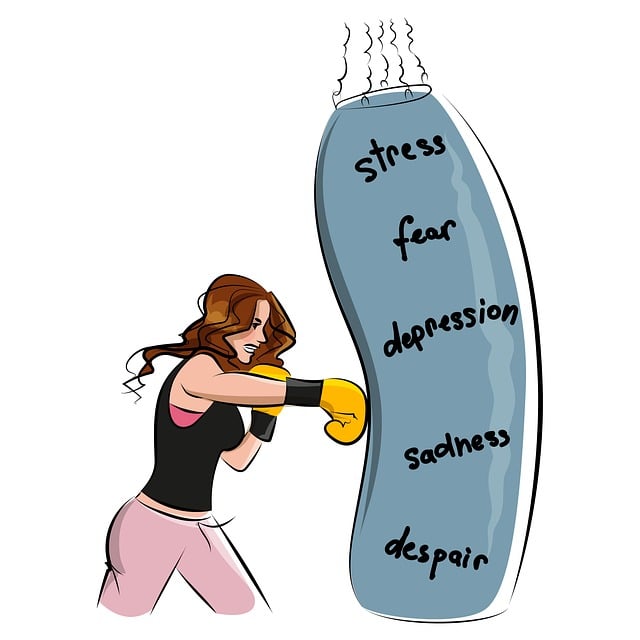2023 marked a significant rebound for the global economy as it navigated the aftermath of the pandemic and geopolitical tensions. The recovery was characterized by resilient consumer spending, a rebound in industrial activity, and a steady expansion in employment. Central banks worldwide adjusted their monetary policies to manage inflationary pressures, which influenced investment decisions and economic growth prospects. The year also saw advancements in technology and innovation continue to shape industries, with digital transformation and sustainability initiatives gaining traction. Overall, the global economic landscape displayed both challenges and opportunities as it adapted to a rapidly changing world.
Stem cell therapies are at the forefront of a revolution in healthcare, offering regenerative solutions for fatigue that promise to transform our approach to sustainable energy and resilience. This article delves into the advancements of stem cell therapy for fatigue, exploring how energy restoration treatments can be enhanced through these innovative medical interventions. We will examine the role of mitochondrial health therapy in maintaining vitality, the potential of cellular rejuvenation for boosting energy levels, and the cutting-edge applications of peptide therapy for expedited fatigue recovery and resilience. Join us as we explore how these treatments are paving the way for a future where sustainable energy isn’t just a concept but a tangible reality for individuals seeking to optimize their health and well-being.
- Harnessing Stem Cell Therapies to Combat Fatigue and Enhance Energy Restoration
- Mitochondrial Health Therapy: A Regenerative Approach to Sustainable Vitality
- Cellular Rejuvenation Techniques for Elevated Energy Levels
- Innovations in Peptide Therapy for Accelerated Fatigue Recovery and Resilience
Harnessing Stem Cell Therapies to Combat Fatigue and Enhance Energy Restoration

Regenerative solutions for fatigue are gaining traction in the medical field, with stem cell therapies emerging as a promising avenue for combating and reversing the debilitating effects of chronic fatigue. These treatments harness the restorative potential of stem cells to repair and rejuvenate damaged tissues and organs, including those responsible for energy production within the body. Mitochondrial health therapy, in particular, focuses on replenishing mitochondria, the powerhouses of the cell, which can deteriorate over time, leading to diminished energy levels. By introducing new, functional mitochondria into affected cells, this approach aims to enhance energy restoration and overall vitality.
In addition to mitochondrial health therapy, stem cell therapy for fatigue is being explored in conjunction with other regenerative modalities such as platelet-rich plasma (PRP) therapy and peptide therapies. PRP therapy for fatigue utilizes a concentration of a patient’s own platelets to accelerate healing and relieve pain associated with chronic fatigue syndrome. Peptide therapy for fatigue recovery, on the other hand, employs bioactive peptides that signal cells to generate new cellular growth and repair, thus promoting energy restoration treatments that are tailored to individual needs. Cellular rejuvenation for energy not only addresses the symptoms of fatigue but also seeks to identify and treat underlying causes, offering a holistic approach to restoring energy levels and enhancing resilience.
Mitochondrial Health Therapy: A Regenerative Approach to Sustainable Vitality

Mitochondrial health therapy stands at the forefront of regenerative solutions for fatigue, offering a pathway to sustainable vitality. This innovative approach targets the cellular powerhouses, mitochondria, which are pivotal in energy production. By harnessing stem cells and advanced peptide therapies, this treatment aims to enhance mitochondrial function, thereby combating the effects of chronic fatigue and promoting a robust sense of energy restoration. The therapeutic process involves the administration of specialized cells and peptides that support cellular rejuvenation, effectively addressing the root causes of energy depletion rather than merely masking its symptoms.
Stem cell therapy for fatigue is not just a treatment but a transformative experience in the realm of energy restoration treatments. It leverages the body’s innate capacity for self-healing by introducing new, healthy cells that can differentiate into various tissue types, including those that regulate energy metabolism. This cellular rejuvenation for energy not only revitalizes the patient but also imparts resilience against future fatigue-related challenges. Additionally, PRP therapy for fatigue recovery is increasingly being recognized as a complementary procedure within this domain. Platelet-rich plasma, rich in growth factors, is applied to areas that require enhanced healing and energy replenishment, further bolstering the body’s regenerative potential. Through these cutting-edge interventions, patients can experience a renewed zest for life, with sustained energy levels and improved overall well-being.
Cellular Rejuvenation Techniques for Elevated Energy Levels

Stem cell therapies are at the forefront of regenerative solutions aimed at combating fatigue by enhancing mitochondrial health and restoring energy levels in individuals. These treatments capitalize on the body’s innate capacity for repair and renewal, offering a promising avenue for those suffering from chronic fatigue. Mitochondrial health therapy, in particular, targets the powerhouses of our cells, promoting efficient energy production and improving overall vitality. This approach has shown promise in clinical settings, where it has been applied to rejuvenate cellular function and elevate energy reserves.
In addition to mitochondrial therapies, stem cell therapy for fatigue is also being explored for its potential in fatigue recovery. This innovative treatment harnesses the regenerative properties of stem cells to restore the body’s natural balance, which can be disrupted by prolonged periods of fatigue. For example, platelet-rich plasma (PRP) therapy for fatigue leverages a concentrate of a patient’s own blood cells to stimulate healing and energy restoration in affected tissues. Similarly, peptide therapy for fatigue recovery utilizes specific amino acid chains that signal the body to increase its natural production of energy, further enhancing cellular rejuvenation and promoting sustained energy levels. These cutting-edge therapies offer a beacon of hope for individuals seeking sustainable solutions to overcome fatigue and restore their zest for life.
Innovations in Peptide Therapy for Accelerated Fatigue Recovery and Resilience

Stem cell therapies are at the forefront of regenerative solutions for fatigue, offering novel approaches to enhance an individual’s resilience and energy restoration. These therapies harness the body’s innate capacity to repair and regenerate by introducing specialized cells that can differentiate into various types of tissue. One such innovation is the use of peptide therapy for fatigue recovery, which targets the cellular mechanisms underlying fatigue. Peptides act as signaling molecules that stimulate stem cells to proliferate and differentiate, thereby promoting the repair of tissues and organs affected by fatigue. This approach can be particularly effective in improving mitochondrial health, a therapy that directly addresses the energy-producing factories of our cells, ensuring they function optimally and contribute to sustained energy levels.
In the realm of cellular rejuvenation for energy, platelet-rich plasma (PRP) therapy for fatigue emerges as a promising treatment modality. PRP harnesses a patient’s own blood components to stimulate healing and regeneration. By concentrating platelets rich in growth factors, PRP therapy can enhance the body’s natural repair processes, potentially leading to faster recovery from fatigue-related conditions. This cellular therapy not only aims to alleviate symptoms but also seeks to address the underlying causes of fatigue, offering a sustainable and resilient solution for those suffering from persistent exhaustion. The integration of stem cell and peptide therapies represents a leap forward in medical science, paving the way for advanced energy restoration treatments that can significantly improve an individual’s quality of life and overall vitality.
Regenerative solutions for fatigue have taken center stage in the pursuit of sustainable energy and resilience. This article has explored the promising avenues stem cell therapies offer for combating fatigue and enhancing energy restoration, from mitochondrial health therapy to cutting-edge peptide treatments for fatigue recovery. The innovative cellular rejuvenation techniques and PRP therapy for fatigue discussed underscore a paradigm shift towards more effective and durable energy restoration treatments. As these therapies evolve, they hold the potential to significantly bolster individual and societal resilience in the face of energy demands, paving the way for a future where vitality is not just sustained but enhanced through the power of regenerative medicine.
